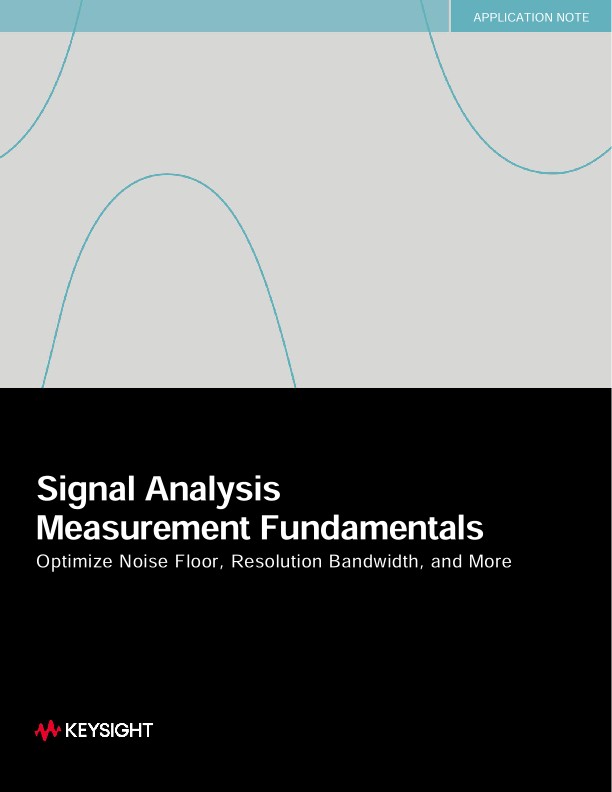
Signal Analysis Measurement Fundamentals
Application Notes
Introduction
For an RF engineer, a spectrum analyzer or signal analyzer is an essential and fundamental measurement tool, used in all phases of the product life cycle. Key characteristics such as performance, accuracy, and speed help R&D engineers enhance their designs and help manufacturing engineers improve test efficiency and product quality. This note offers a variety of techniques that will help you master signal analysis in your application. Our focus is on helping you optimize attributes such as measurement noise floor, resolution bandwidth, dynamic range, sensitivity, and more while maintaining speed and productivity.
We generally use the term “signal analyzer” to indicate an instrument that has a spectrum analyzer architecture and an all-digital intermediate frequency (IF) section that processes signals as complex vector quantities, enabling multi-domain operations such as digital modulation analysis and time capture. A broader discussion of the spectrum and signal analyzers and their operation is available in Keysight Application Note 150, Spectrum Analysis Basics.
Table of contents
- Improve Measurement Accuracy in Each Test Setup
- Balance the Tradeoffs when setting Resolution Bandwith
- Increase Sensitivity When Measuring Low-Level Signals
- Optimize Dynamic Range when Measuring Distorsion
- Accurately Isolate and Measure Bursts and Transients
- Enhance Speed, Accuracy, Reliability with Measurement Applications
- Identify Internal Distortion Products
- Find and Measure Elusive Signals using Real-Time Analysis
- Conclusion
Improve Measurement Accuracy in Each Test Setup
To optimize measurement accuracy, it’s important to understand the signal analyzer’s inherent accuracy and identify the sources of error in the connection of the device under test (DUT). A combination of good measurement practices and useful analyzer features will mitigate errors and may shorten test time.
Digital IF technologies yield a high level of basic accuracy, especially when enhanced with internal calibrations and alignments. For example, self-generated corrections and highly repeatable digital filters give you the freedom to change settings during a measurement with little impact on repeatability. Typical examples include resolution bandwidth, range, reference level, center frequency, and span.
Once the DUT is connected to a calibrated analyzer, the signal-delivery network (Figure 1) may degrade or alter the signal of interest. Correcting or compensating for these effects will ensure the best accuracy. You can do this—conveniently and effectively— using the analyzer’s built-in amplitude correction function in conjunction with a signal source and a power meter.
This process shifts the measurement reference plane from the analyzer front panel to the DUT. In many signal analyzers, you can store multiple different corrections for different equipment configurations or analyzer setups.
You can also save correction values for different combinations of cables and adapters. It’s always worthwhile to pay careful attention to the elements of the DUT/analyzer connection, including the length, type, and quality of cables and connectors. Connector care, including proper torque, helps ensure the minimum loss, good impedance match, and repeatability—especially at microwave and millimeter-wave frequencies.
In challenging measurements, you may be able to improve performance by moving the analyzer’s effective input nearer to the DUT. For example, when measuring very small signals, you can connect external preamps directly to the DUT, increasing signal levels and mitigating problems such as attenuated signals or added noise. Today’s smart preamps automatically configure the analyzer and upload gain and frequency response, enabling precise corrections.
Similarly, smart mixers can enhance measurements at very high frequencies. You can place these at the DUT output, which is often a direct waveguide connection. The mixer automatically identifies itself and downloads its conversion factors for an accurate display of results.